


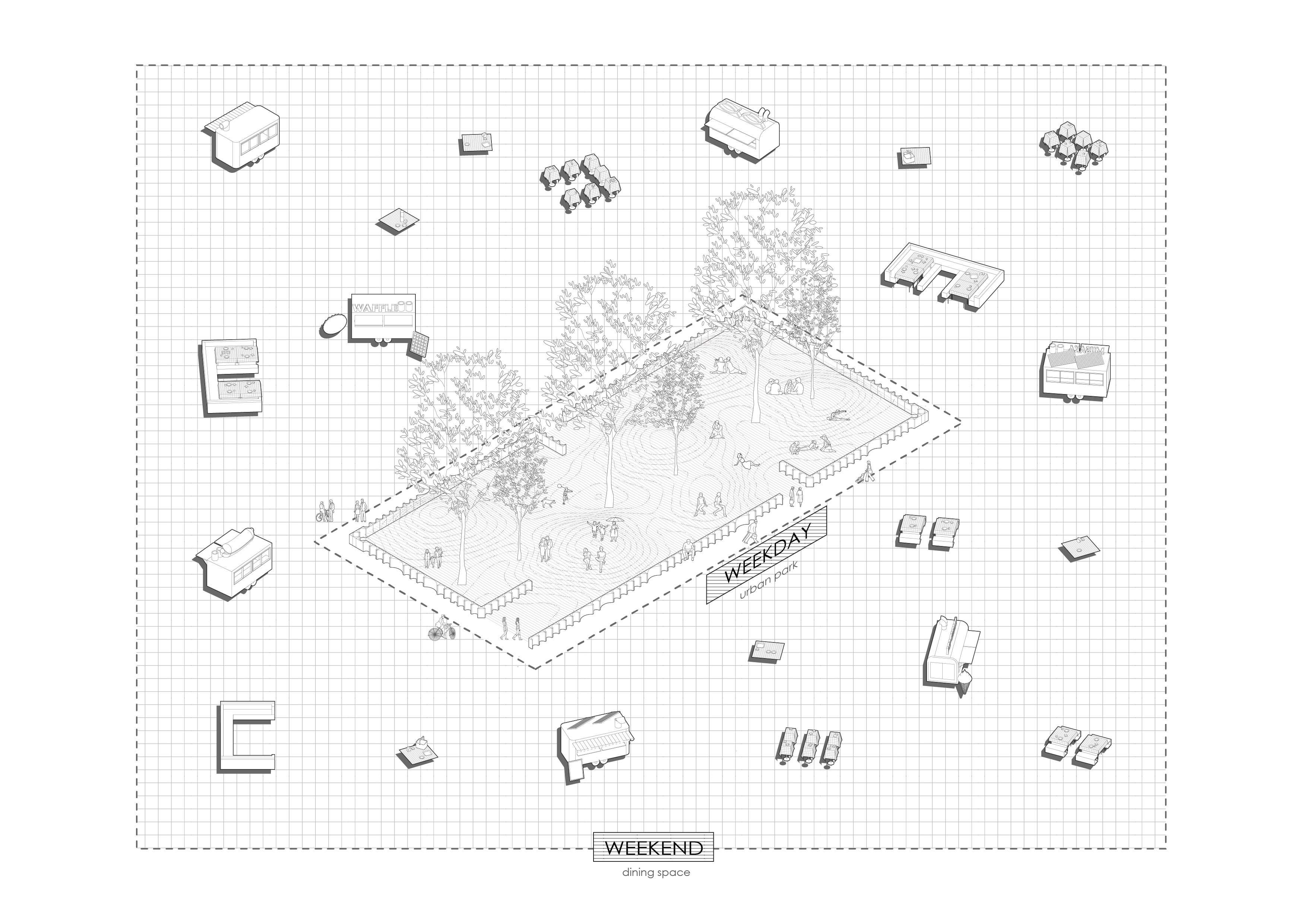
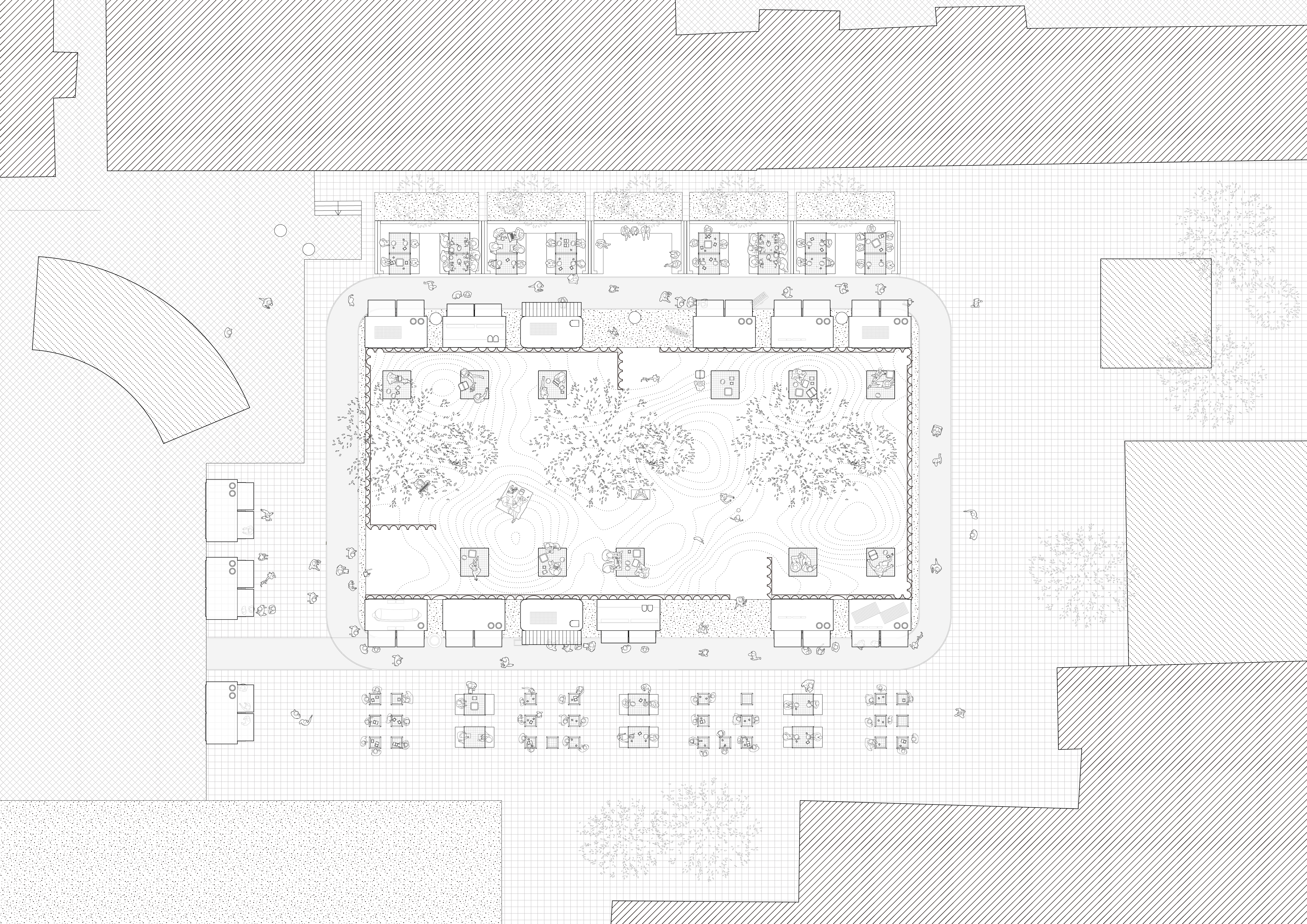
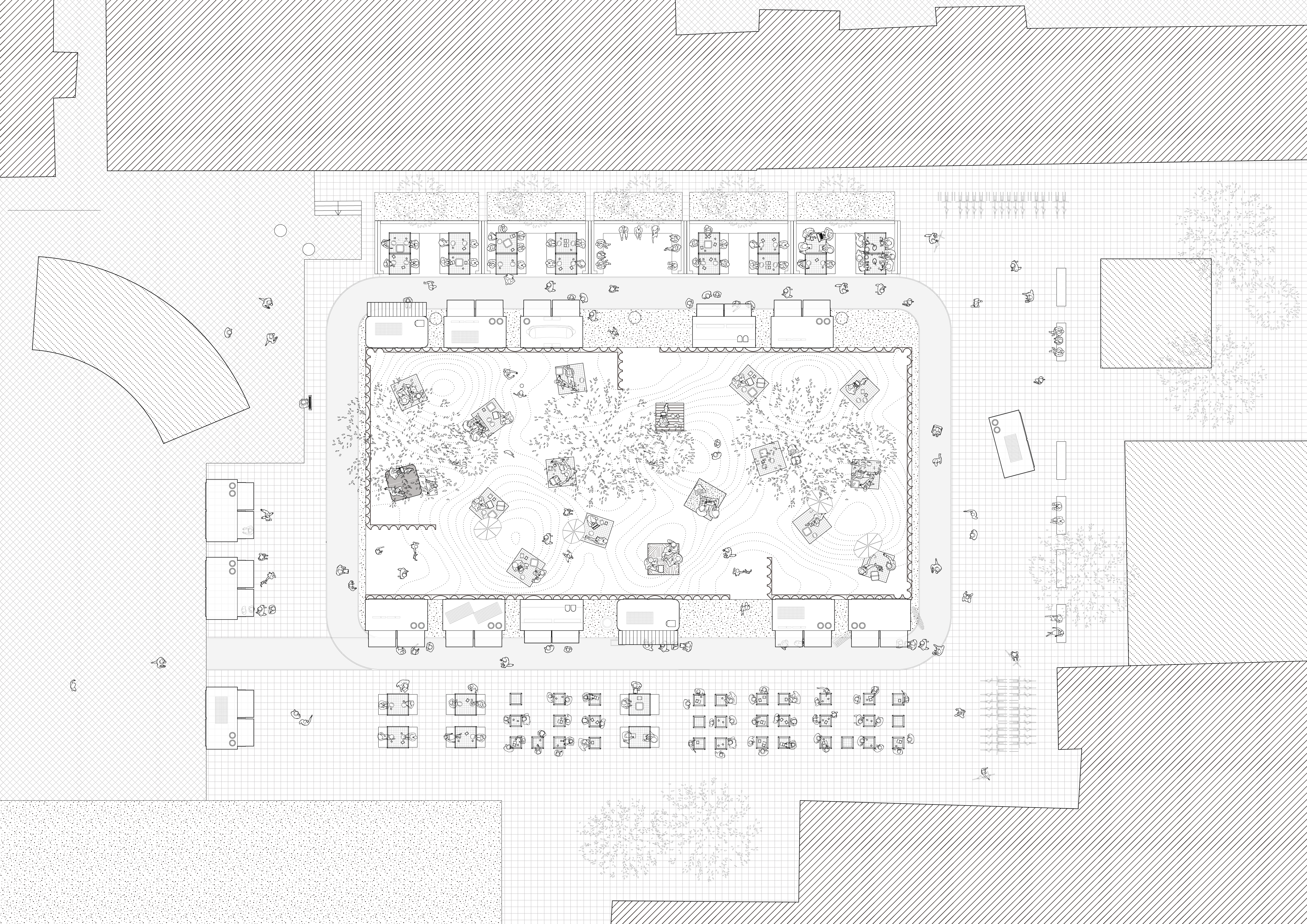


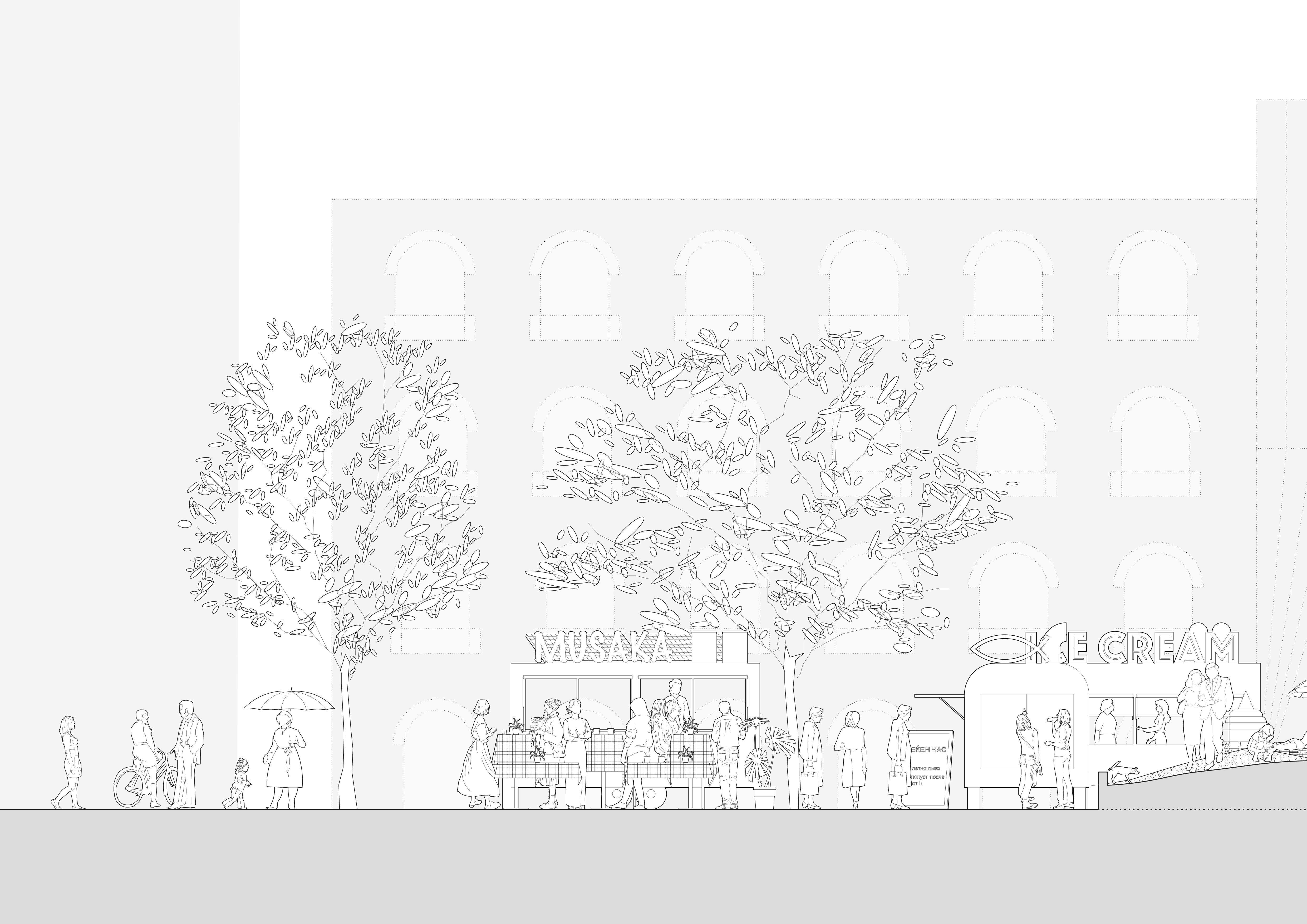
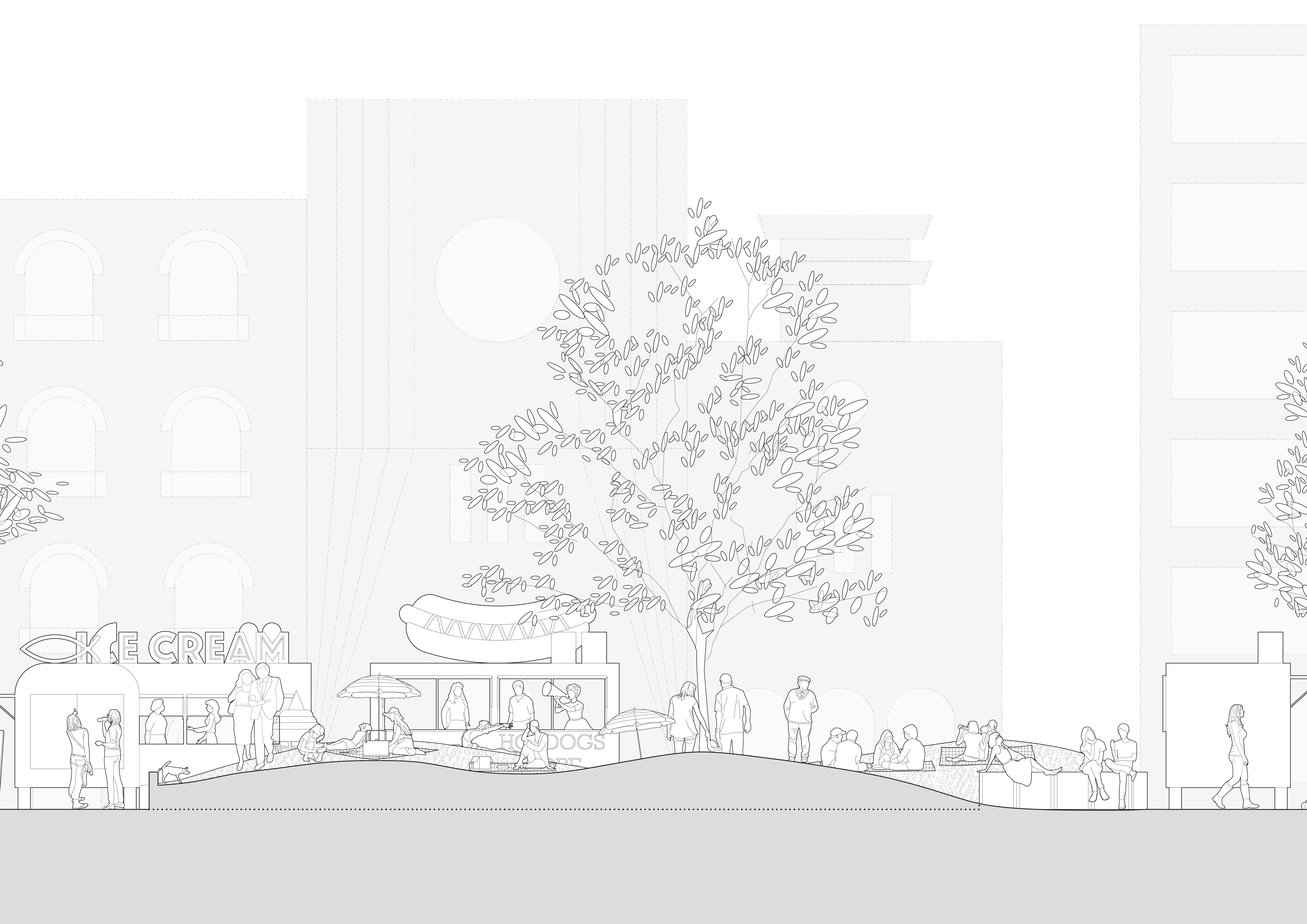
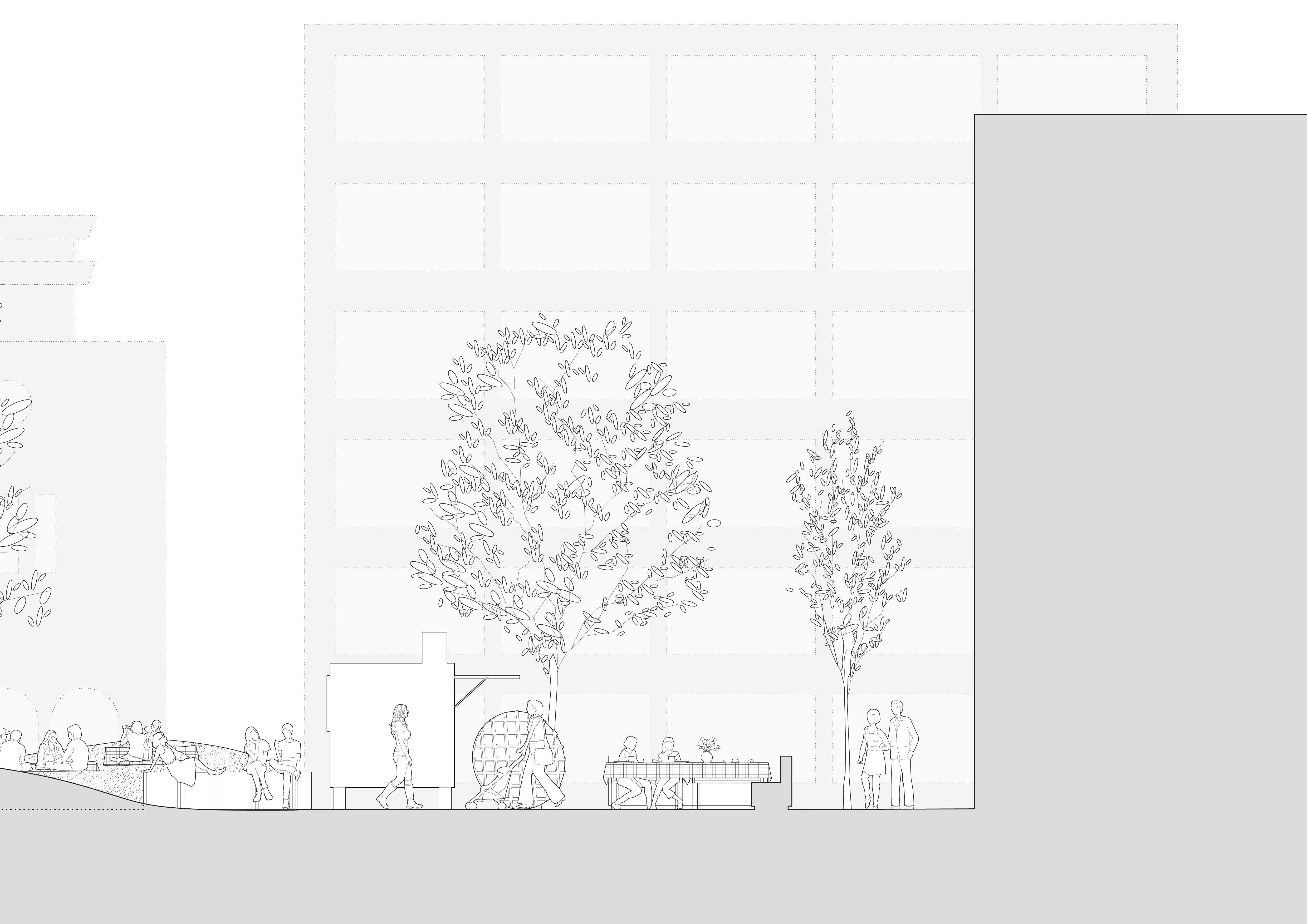

Picnic Ritual
Ist Place in Dining in the Urban Competition 2020
Site: Skopje, Marcedonia
Date of Project: Jun 2020
Team work with Chenhao Ma
Collective dining in the urban is not only a celebration of the richness of urban life, but more importantly a feast for information exchange, a boost for local food culture, and an opportunity for social cohesion. Unfortunately, in a country where the ethnic segregation and social polarization consistently discourage the fusion of dining activities across different social groups, the dining scenes, the family rituals, the homely cuisines that rarely appear outside family kitchens remain undiscovered, and the value of vernacular food culture is much underrated.
This proposal tries to transform the once insufficiently utilized plaza to a picnic garden as an invitation to the display of homemade food and family rituals. The picnic/table cloths, as a symbol of equalization, formally unify the all dining spaces and perceptually connect all diners, are the initiator of dining activities on site, and the catalyst for the migration from tables to the lawn with their different layout. The lawn is also a test ground for public awareness - the spontaneous occupation and usage of the picnic garden which contains much negotiation, cooperation and compromise could be the enlightenment in participation in democratic process for Skopje dwellers.
Picnic cloths are placed on the lawn for the use of food truck customers at early stages, and are later provided to picnic-seekers. Those unplanned and intentional picnics jointly create the regional tradition of picnic, and eventually encourages picnickers with their own food and cloth to join the stunning scene of collective dining. The delight of having the company of families, the novelty of picnicking in a room of the city, the proximity of geographically close yet cognitively remote food culture, will gather all the fragments of local food footprint and awaken the once barren ground. The ‘picnic ritual’, as an intervention to excavate cultural traditions and potentially a replicable public space development mode, retrieves the attention on the neoclassical facades that face the past of the city, and aims at the contemporary urban environment created by the living generation.